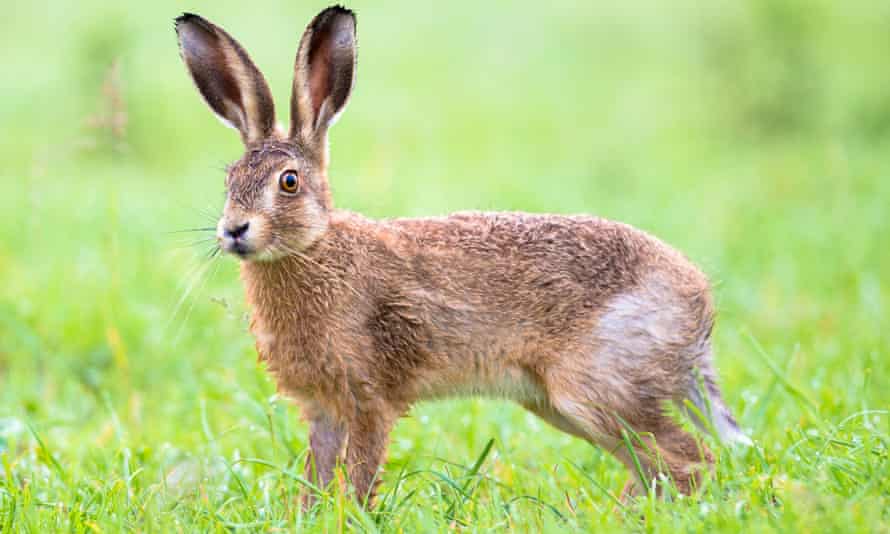New ‘viral cocktail’ killing hares in UK and Ireland, scientist warns
Public urged to report dying or dead animals as fears grow that form of myxomatosis has crossed over from rabbits

First published on Fri 27 Aug 2021 07.19 EDT
More than 1,100 hares have been recorded as dying of a new “viral cocktail” since 2018 as fears grow that a form of myxomatosis has jumped from rabbits.
People are being urged to report dying or dead hares to scientists who are seeking to discover the cause of so many unexplained deaths in the hare population, with a spike in sickness occurring each autumn.
Diana Bell, a professor of conservation biology at the University of East Anglia, said a “viral cocktail” of several deadly new diseases was pushing the hare population in Britain and Ireland to the brink, alongside other pressures, including illegal hare-coursing and habitat loss.
The brown hare has inspired a rich vein of folklore and poetry since arriving in Britain in or before Roman times, but its numbers have fallen by an estimated 80% over the last century.
Some hares have been reported with closed eyes and swollen heads – similar symptoms to myxomatosis, which first broke out in Britain in 1953 and drastically reduced rabbit populations – but others are dying with dilated pupils and eyes wide open.
“We’re desperate to get more bodies for veterinary pathologists to test,” said Bell, who is asking people who find a dead hare to report it to her via email. “A lot of the cases look like myxomatosis but we don’t know exactly how this disease is going to present in hares.”
According to Bell, most hares die out of sight, and while photographs of dead hares are useful to researchers, what scientists really require are the fresh bodies of hares that have been afflicted by these mysterious illnesses so accurate postmortems can be carried out.
Many hares in Britain also appear to be dying from a version of rabbit haemorrhagic disease virus type 2 (RHDV2), which has decimated the wild rabbit population since emerging from commercial rabbit farms in northern France in 2010.
The first cases of hares dying from RHDV2 in Britain were confirmed in 2019, but Bell believes another myxoma-type virus is striking down the animals as well. Of the 1,100 dead hares she has recorded, more than 250 of the animals were suffering what looked like myxomatosis.
In France, individual brown hares have been found to be infected both by RHDV2 and another virus known as the European brown hare syndrome virus.
In Spain and Portugal, Iberian hares have been found with symptoms of myxomatosis and diagnosed with a deadly new myxoma virus named MYXV Toledo.
Bell said there was a proliferation of dangerous viruses emerging from live animal markets and the industrial farming of wild species, which could potentially jump to other species and, ultimately, humans. A new strain of avian flu was this year found in poultry workers in Russia.
“It’s like whack-a-mole,” said Bell. “Farming domestic strains of a wild species allows the evolution of all these really nasty viruses, and then a new virus jumps into the wild population.
“What the coronavirus pandemic has highlighted is how little we know about the diseases that are already present in our wildlife.”